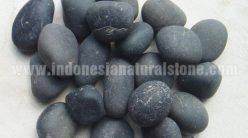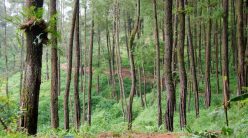By Geoff Earle
UNITED PRESS INTERNATIONAL
washtimes.com
EAST KALIMANTAN, Indonesia (UPI) — Utuh has never tried bird’s nest soup, but for 45 days at a stretch, the indigenous Dayak man with a wide face and bare feet stays in an open house made of logs in a jungle clearing overlooking a large cave so that others — mainly Chinese, but also some Indonesians — can enjoy the ancient delicacy.
Utuh, who like many Indonesians uses only one name, is part of a substantial network of guards watching over caves that are home to Indonesia’s swift birds, members of a small species resembling swallows that produce a special nest favored by connoisseurs. Other men specialize in extracting the nests from the caves to bring them to market. It is all part of a sizeable cottage industry in East Kalimantan, the Indonesian part of the island of Borneo, home to one of the world’s largest tropical rainforests.
The tiny birds’ nests, which some consider an aphrodisiac, are big business here and throughout southeast Asia. A kilogram of nests can fetch as much as $1,800.
Environmentalists say the nest business has the potential to provide a way for indigenous people here to make a living off the forest other than cutting it down. Logging and an ongoing threat of forest fires threaten to overwhelm all of the old-growth forests here within the next 15 years.
“It’s legal,” said Scott Stanley, who directs the East Kalimantan office of The Nature Conservancy. “It’s quite sustainable, too” — so long as it is done the right way.
Some scientists, and even those who harvest the nests, acknowledge the swift birds are endangered by the increasing competition in one of the poorest parts of the world. The Indonesian national government has put forward a new regulation of the nest business that awaits the new president’s signature. The scientists are concerned that without new regulations and robust enforcement, nest harvesting will overtax the species and threaten its long-term survival.
Part of the problem is, with growing demand and shrinking supply, the nests have become so valuable people are removing them from caves faster than the birds can rebuild them. Swift birds make nests by regurgitating a protein in their saliva called mucilage, which solidifies to form the nests.
The birds attach their white, sticky nests to the interior walls and high vaulted ceilings of numerous caves carved into massive rock formations in the jungle. The birds, among the fastest flyers of any species, dart in and out of the caves to feed, flying by echolocation — just like their cave neighbors, bats.
Utuh guards the caves to fend off any rival nesters who might try to poach on the territory belonging to his boss, who has an official government concession to harvest them. According to environmental scientists, however, the harvesters pose the biggest threat to the swift birds by pushing them beyond their ability to produce new nests.
“When I first started collecting birds’ nests, I’d go in a cave like this, and get as much as 14 kilograms” of nests, said Tewet, who started collecting in the 1960s. Now, he said, a single trip brings forth as little as 4 ounces.
Utuh works for a Chinese businessman named Liong, who owns the concession to extract nests from a large complex of caves here. He brushes aside questions about reputed mob control, saying he always conducts a straight business and never tries to keep any of his his boss’s profits.
“There are some people who are corrupt,” he said through a translator. “Some people who are not. Those who are corrupt don’t last long. Because I want to keep my job, I keep everything clear,” he said, using the pidgin Indonesian word “gelas,” for “glass.”
Utuh said Liong owns the concession to all of the caves on the mountain.
“Many people work for Liong,” he said. “There are many, many caves around here.”
Of the nests harvested in Indonesia, many are destined for mainland China and Taiwan. Hong Kong is among the biggest importers. According to an article by two Indian naturalists in National Geographic BirdWatcher, Hong Kong imports up to 100 tons of nests each year, at a cost of about $25 million.
The nests are used as a thickener for broth and are combined with chicken and spices. Recipes date back more than 1,000 years in China and the dish is often served on special occasions — fetching about $60 in some Hong Kong restaurants.
Competition to acquire a piece of the action can be fierce — even deadly. When the government of the Berau district decided to provide open access to one cave in the region, chaos ensued.
“There were robberies and killings — pretty bad stuff,” said Leo Salas, a biologist working with TNC, which has organized biological surveys and conservation efforts in the region.
The guardhouse Utuh inhabits is expansive and built high among the trees with a commanding view. Constructed of logs hand-cut by machete and fastened with plastic twine, it is sturdy, although it was built only three months ago to replace another that burnt in a devastating fire. One portion is for sleeping, another is a sort of living room with a place for a fire and storage for plastic jerry cans full of water and cooking oil, and there is a high perch for a lookout.
The rising threat to the swift birds is evident, said Tewet, 57, a lanky man who sports a long-sleeved yellow T-shirt and carries a wood-handled machete.
“Before, there were large number and we could get them in pretty much every cave,” he said. “Now, we need to go long distances into the forest to find small caves.”
Tewet, who also serves as a forest guide, said it takes about 45 days for a swift bird to make a nest. In the old days, he said, nesters would leave nests and come back weeks later if the birds were waiting for their eggs to hatch. Now, that does not always happen.
“If the eggs are laid and we see them, we wait until the swifts fledge,” Tewet said, adding that other people take the eggs and eat them.
He complained local Dayak people no longer get to perform most of the work. “Now, outsiders do it,” he said.
Sidong, another nester, moved to Borneo from the island of Flores after he was offered a job by Liong’s group. He guards another cave about a two-hour hike away, living with several other men in an open wood structure with a plastic tarp overhead.
Sidong, who displays a photo of a woman he says is one of his wives, described his business practices while stuffing several cartons of Indonesian cigarettes into a large knapsack. He said he and the other nesters use long sticks to knock the nests down from high up in the caves.
“If we see them, we get them,” he said, “even if they have birds or eggs.”
Asked how the eggs tasted, Sidong laughed and replied, “bagus,” a popular expression meaning “cool,” though he added if he knows for certain there are eggs in a nest, he waits before harvesting it.
Sidong said the concession for the entire cave system in the area cost 450 million rupiah for three years, or about $50,000 — a huge amount of money in this part of the world. The organization employs about 100 people to manage 70 caves.
There are two species of swiftlets who make an edible nest: the black swiftlet and the white rumped swiftlet. Both live here, as well as in Northwest China, Sumatra and Java. Indonesia, whose island rainforests wrap around the equator, is home to the majority of the productive birds, according to Mas Noerdjito, an Indonesian biologist with the government’s research facility, called LIPI.
“Indonesia doesn’t have a cold season,” Noerdjito explained. “In other areas, there is seasonal productivity, whereas in Indonesia, it’s year round.”
After a swift bird makes a nest and lays an egg, it waits about five months before it lays another. Nesters can trick the bird into building another nest sooner, however, by removing the first one. The method works well, unless it is used to the point where the bird’s biological resources are exhausted.
“At the end, the animal just basically gives up breeding,” Noerdjito said.
In one part of Java called Pacitan where swiftlets nest, the birds’ productivity in nest production has dropped to 0.03 percent of 1949 levels, Noerdjito said. Nesters have sought to make up for declining wild nests by harvesting them in captivity — a growing enterprise.
There are efforts to impose order on Indonesia’s swift bird industry, which is thought to be dominated by cartels from China that secure lucrative concessions through accommodations with local Indonesian officials.
A new national regulation is expected to receive final approval soon, but conservationists warn Indonesia’s highly devolved government, which guarantees substantial local autonomy, makes local enforcement extremely difficult. Moreover, they said, any regulation must go beyond simple harvesting rates to include the bird’s overall environment. Swift birds, agile flyers all, need a forest area as large as 5 miles (8 kilometers) square in which to feed on insects.
“The regulation cannot just be how many nests you take,” Noerdjito said. “The regulation must be something about the area they use. It will not succeed by police enforcement.”
Illegal logging and the threat of further forest fires pose additional threats to the swift birds’ habitat.
“These areas that have burned need to be reforested,” Noerdjito said. “This is something local people at the moment don’t seem to understand.”





